
Roots
The quiet hours of slumber, often perceived as a period of stillness and restoration, conceal a subtle dance of forces that can profoundly influence the vitality of our hair. For those with coils, this nightly interaction with sleep surfaces holds particular significance. The journey into understanding the true nature of silk pillowcases for coiled hair begins not with a simple declaration of benefit, but with a gentle inquiry into the very architecture of hair and the environment it encounters each night. Consider the delicate balance within each strand, a balance constantly at play, even as we drift into repose.
Our hair, particularly textured hair, possesses a unique structure that renders it both magnificent and susceptible. A single strand of hair, visible to the eye, is a complex biological marvel. At its heart lies the cortex, providing strength and elasticity, surrounded by the cuticle, a protective outer layer of overlapping scales, much like shingles on a roof.
These scales, when healthy and smooth, lie flat, reflecting light and shielding the inner cortex. For coiled patterns, these scales naturally lift at the curves and bends, making them inherently more prone to external influence and potential damage.
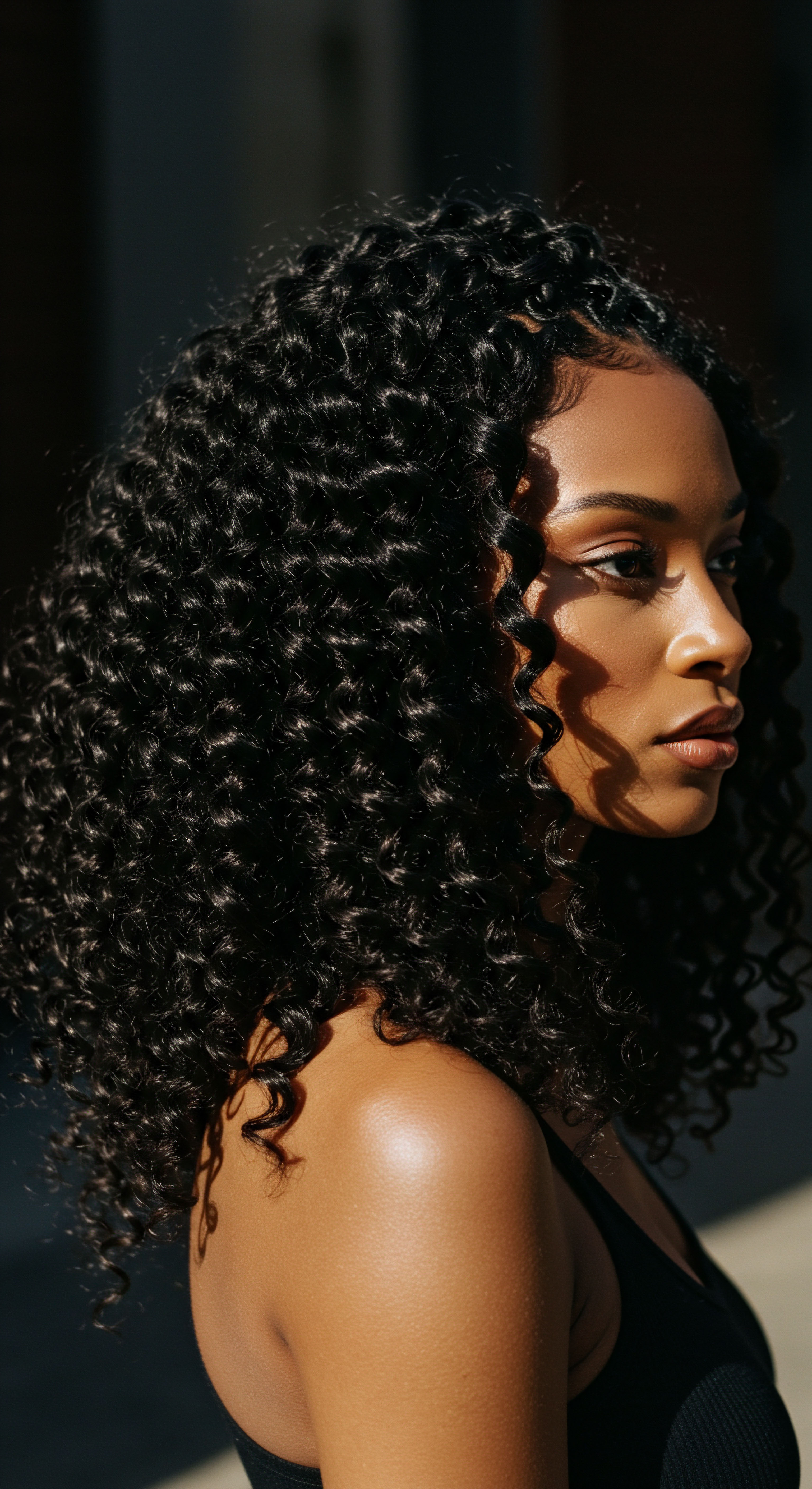
Hair Anatomy and the Coiled Structure
The very definition of a coil lies in its helical shape, a spiral that can range from a loose wave to a tight, spring-like formation. This curvature, while beautiful, presents distinct characteristics when considering its interaction with surfaces. Unlike straight strands that offer a relatively uniform surface area, coiled hair presents numerous points of contact. Each curve and bend is a potential site for friction, a tiny point of resistance that, over hours of unconscious movement during sleep, can accumulate into tangible wear.
When we consider the cuticle, the outermost protective layer, its condition is paramount for hair health. In straight hair, cuticles typically lie flat. However, in coiled hair, the cuticle scales are naturally raised at the apex of each curl and bend.
This inherent lifting, a biological adaptation to the hair’s shape, means coiled hair is more vulnerable to external stressors that cause friction. The integrity of these cuticle scales directly impacts moisture retention and overall strength.

The Essential Lexicon of Textured Hair
To truly appreciate the nuances of coiled hair and its care, a shared language becomes helpful. Understanding certain terms allows for a more precise discussion of hair health and needs.
- Coil ❉ A tightly wound, spring-like curl pattern, often with a small circumference.
- Cuticle ❉ The outermost protective layer of the hair shaft, composed of overlapping scales.
- Friction ❉ The resistance that one surface encounters when moving over another. For hair, this can cause the cuticle to lift or chip.
- Porosity ❉ The hair’s ability to absorb and retain moisture, influenced by the state of its cuticle.
- Breakage ❉ The physical fracturing of the hair shaft, often resulting from mechanical stress or dryness.

The Nightly Choreography of Hair and Pillow
As sleep descends, the average person shifts positions multiple times, often without conscious awareness. This nocturnal movement, while necessary for bodily comfort, creates a dynamic interplay between hair and pillowcase. Cotton, a widely used fabric, possesses a natural absorbency and a microscopic texture that, while seemingly soft to the touch, can act like a gentle abrasive against the hair cuticle.
A study in the Journal of Cosmetic Dermatology reported that smoother fabrics, such as silk, assist in preventing hair shaft damage caused by repeated friction. This research highlights the tangible impact of a sleep surface on hair integrity. The microscopic roughness of conventional pillowcases can snag and tug at delicate coils, especially when the hair is dry. This constant agitation leads to the lifting of cuticle scales, which then allows precious moisture to escape and leaves the hair vulnerable to damage.
The quiet hours of slumber reveal a subtle dance of forces profoundly influencing hair vitality, particularly for coils.
The very nature of coiled hair, with its numerous points of contact along each strand, means it is particularly susceptible to the mechanical stress induced by rougher fabrics. This susceptibility is a key reason why the choice of sleep surface becomes a foundational element in a comprehensive hair care regimen for those with textured hair. The pursuit of serene strands begins with acknowledging these fundamental interactions.
| Hair Type Straight |
| Cuticle Arrangement Generally flat, uniform |
| Friction Susceptibility Lower |
| Hair Type Wavy |
| Cuticle Arrangement Slightly raised at curves |
| Friction Susceptibility Medium |
| Hair Type Coiled |
| Cuticle Arrangement Naturally lifted at bends |
| Friction Susceptibility Higher |
| Hair Type Understanding hair structure helps inform optimal care. |
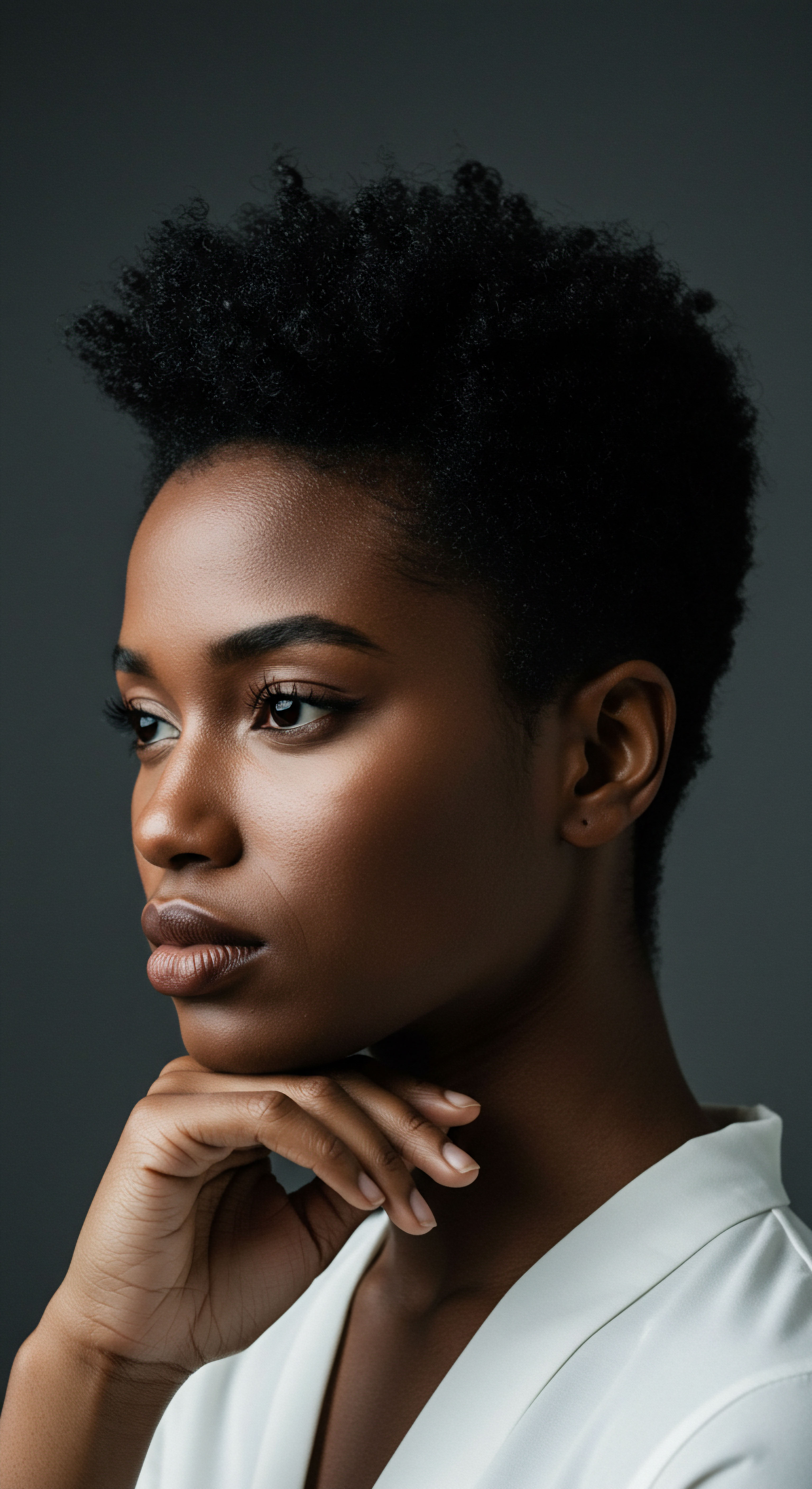
Ritual
Stepping beyond the foundational understanding of hair structure, we now turn our attention to the daily and nightly practices that shape the lived experience of caring for coils. The desire for healthy, vibrant hair often leads us to explore a multitude of products and techniques, yet sometimes the most impactful shifts are found in the seemingly small, consistent acts. Consider the transition from day to night, a time when our coils, having navigated the world’s elements, seek a quiet respite. This is where the thoughtful selection of a sleep surface, such as a silk pillowcase, moves from a simple preference to a considered component of a holistic care ritual.
For individuals with coils, the nightly routine carries a weight beyond mere convenience. It is a moment to protect, to replenish, and to set the stage for the next day’s vibrancy. The texture of a pillowcase, often overlooked, holds a surprising power in this nightly ceremony.
Cotton, while a common household staple, possesses a weave that, under the magnifying lens of trichology, reveals itself as a network of tiny loops and fibers. These can act like microscopic grippers, catching and tugging at the delicate cuticle of coiled strands with every shift of the head.
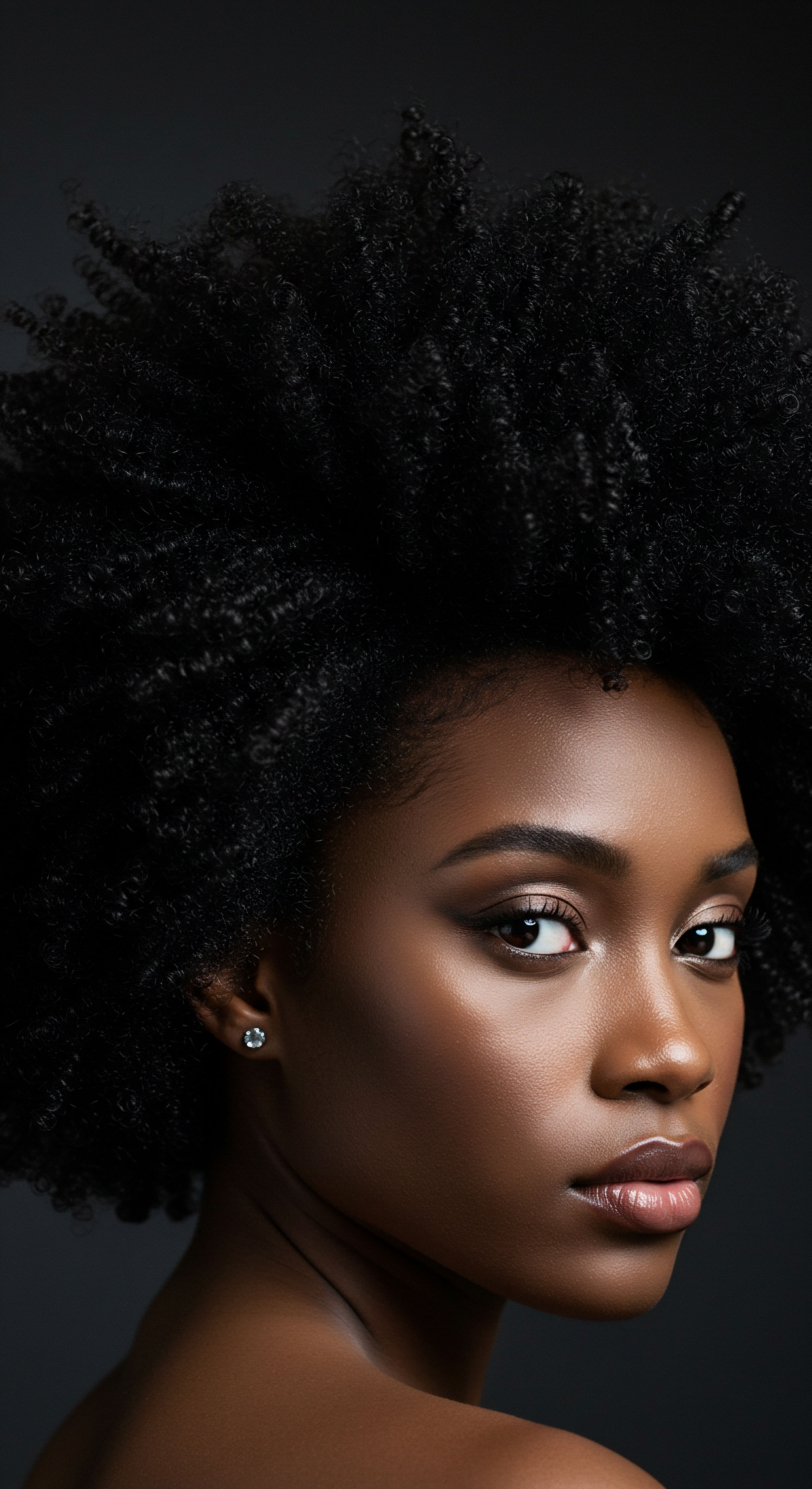
Reducing Friction and Mechanical Stress
The primary appeal of a silk pillowcase for coils lies in its remarkably smooth surface. Unlike cotton, which can create significant drag, silk allows hair to glide effortlessly. This reduction in friction is a tangible benefit, directly addressing one of the leading causes of hair damage during sleep. When hair experiences less resistance, there are fewer opportunities for the cuticle scales to lift, fray, or break.
Consider the mechanics of hair breakage ❉ it often begins with repeated mechanical stress. A study from the International Journal of Trichology indicated that the smooth texture of silk minimizes friction, contributing to a significant reduction in hair breakage. This reduction in mechanical stress is particularly beneficial for coiled hair, which, due to its natural bends and turns, has more points of contact with a pillowcase than straight hair, thus increasing its susceptibility to friction-induced damage. The gentle caress of silk permits coils to retain their natural shape and integrity through the night.

Preserving Moisture and Natural Oils
Coiled hair often leans towards dryness, a characteristic influenced by its structure and the natural path of scalp oils down the hair shaft. Traditional cotton pillowcases are known for their absorbent nature. They readily soak up moisture, not only from the air but also from our skin and hair. This means that any hydrating products applied before bed, or the hair’s own natural sebum, can be wicked away by the cotton fabric, leaving coils parched and brittle by morning.
Silk, a protein fiber, is inherently less absorbent than cotton. This property helps hair retain its essential moisture and natural oils throughout the night. A study published in the Journal of Cosmetic Science observed that using silk pillowcases over a period of 12 weeks resulted in a notable increase in hair moisture compared to cotton.
This moisture retention is a critical factor for the health and appearance of coils, helping to maintain their elasticity, softness, and natural sheen. Hydrated coils are less prone to brittleness and breakage, contributing to length retention over time.
The seemingly small, consistent acts of care, such as choosing a silk pillowcase, hold surprising power in a nightly hair ritual.

Minimizing Tangles and Matting
The very nature of coiled hair makes it prone to tangling and matting, especially during sleep. The constant rubbing and shifting against a rough surface can cause individual strands to interlock and form knots, making detangling a challenging and sometimes painful morning task. This process often leads to significant breakage.
The smooth, frictionless surface of a silk pillowcase allows coils to move freely without snagging. This greatly reduces the formation of tangles and prevents hair from becoming matted. Waking with fewer knots means less manipulation is needed during morning styling, which in turn means less stress on the hair shaft and scalp. This benefit alone can be a game-changer for those seeking to minimize daily hair loss from styling.
| Feature Surface Texture |
| Cotton Pillowcase Rough, fibrous |
| Silk Pillowcase Smooth, slippery |
| Feature Friction on Hair |
| Cotton Pillowcase High |
| Silk Pillowcase Low |
| Feature Moisture Absorption |
| Cotton Pillowcase High |
| Silk Pillowcase Low |
| Feature Tangle Tendency |
| Cotton Pillowcase High |
| Silk Pillowcase Low |
| Feature Impact on Coils |
| Cotton Pillowcase Can cause dryness, breakage, frizz |
| Silk Pillowcase Helps retain moisture, reduces breakage, minimizes frizz |
| Feature Silk offers distinct advantages for coiled hair health. |
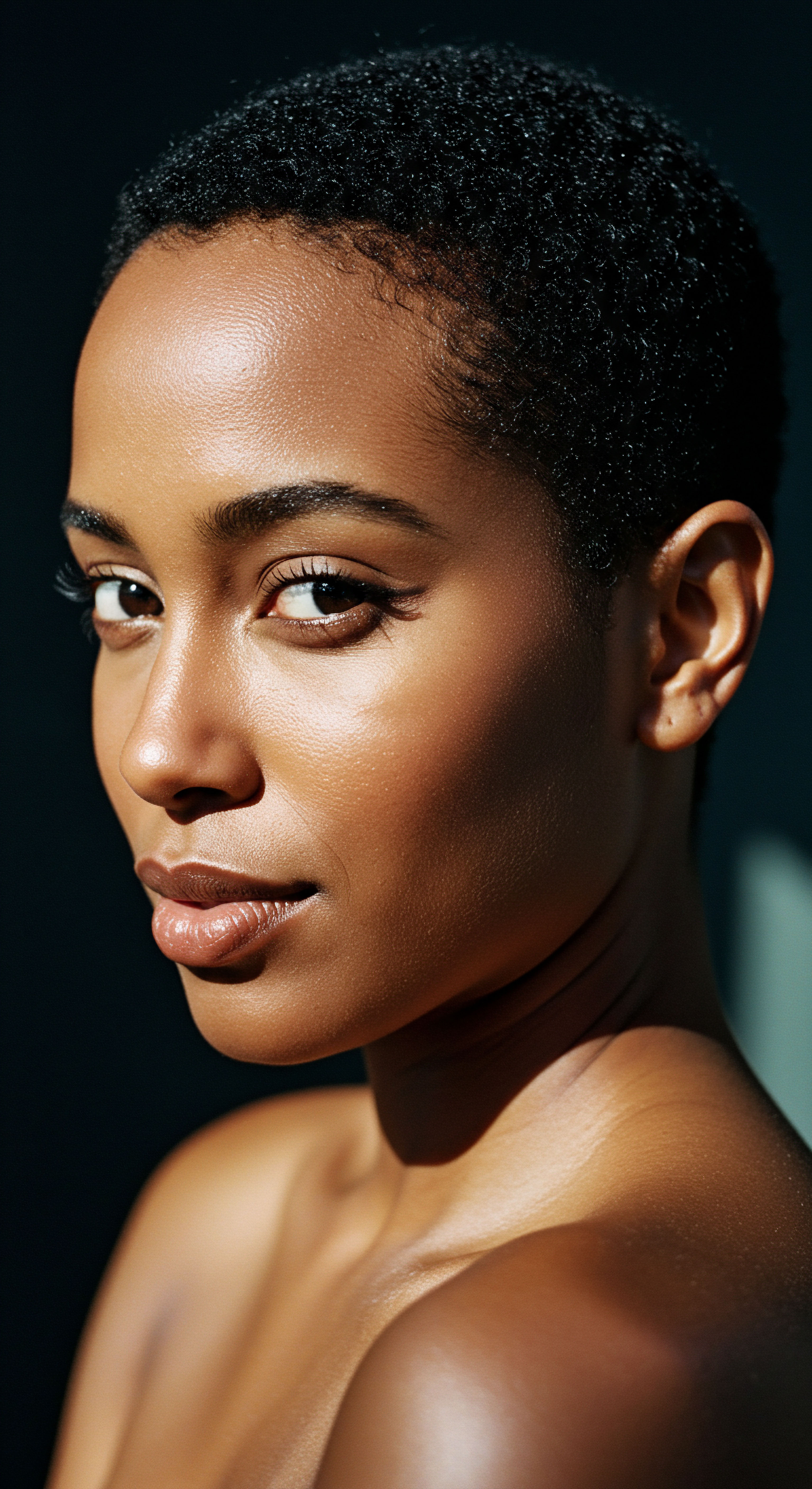
Maintaining Style and Reducing Frizz
For many with coils, preserving a styled look overnight can be a challenge. The efforts invested in defining curls or setting a protective style can be undone by the friction and moisture absorption of a traditional pillowcase. The smooth surface of silk helps to keep styled coils intact, reducing the need for extensive restyling or the application of additional products in the morning.
Moreover, frizz is often a direct result of raised cuticles and a lack of moisture. By minimizing friction and helping hair retain its hydration, silk pillowcases contribute to a smoother, less frizzy appearance upon waking. This subtle yet profound influence on the hair’s surface integrity means coils can retain their definition and sheen, contributing to a more predictable and enjoyable morning hair experience.
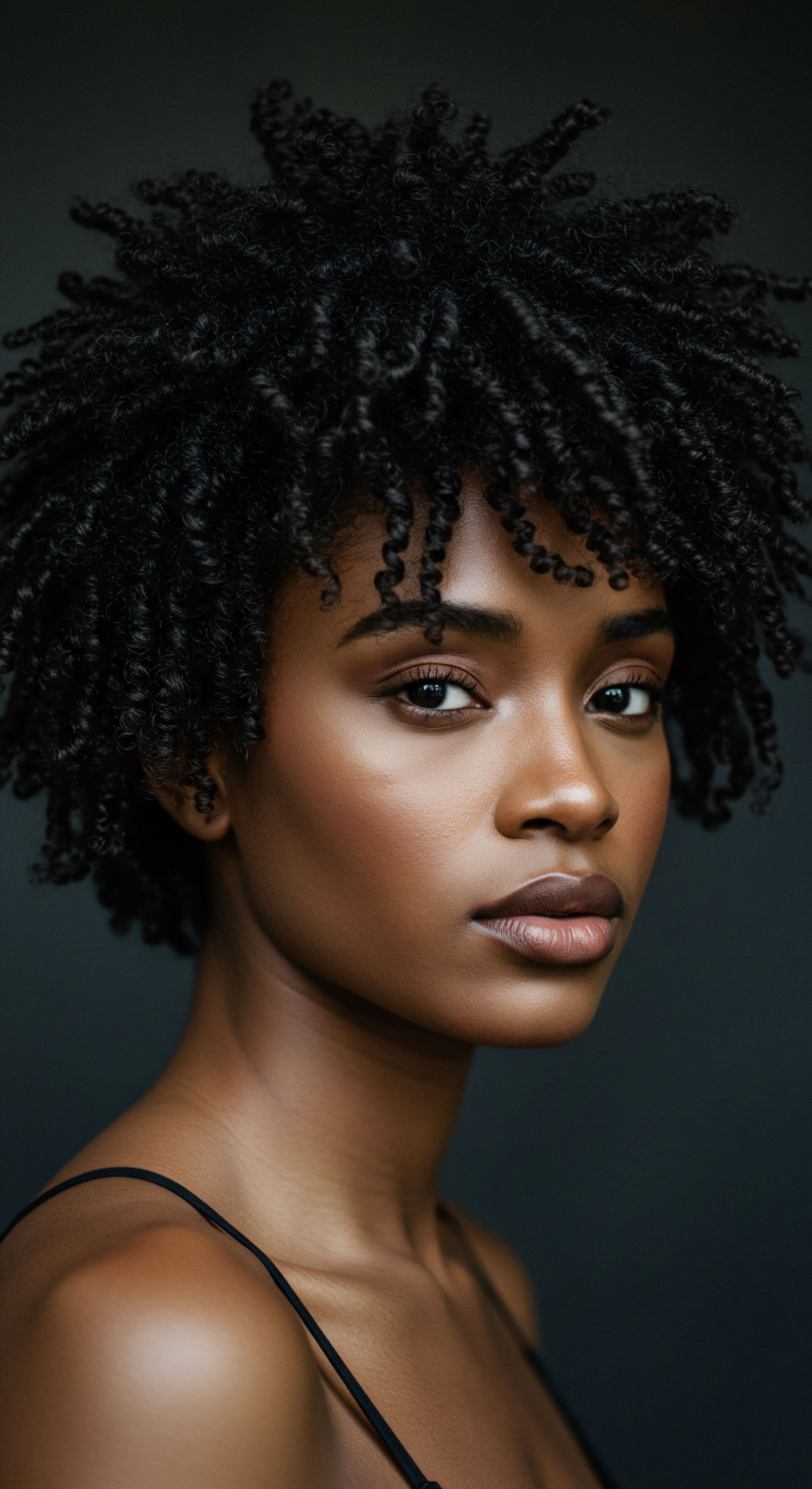
Relay
Beyond the immediate, tangible benefits, how does the choice of a sleep surface, specifically a silk pillowcase, connect with the deeper narrative of coiled hair care, its cultural significance, and the ongoing scientific dialogue? This exploration moves beyond simple observation, inviting a thoughtful consideration of interconnected factors – from the microscopic world of the hair fiber to the broader landscape of self-perception and hair wellness. The conversation around silk pillowcases for coils is not simply about preventing damage; it is about recognizing the nuanced relationship between daily habits and the long-term health and cultural journey of textured hair.
The discourse surrounding textured hair has historically been shaped by societal perceptions, often leading to practices that prioritized conformity over health. In this context, seemingly minor choices, like the fabric we rest our heads upon, take on a greater weight. They become part of a larger shift towards practices that honor and protect the inherent beauty and strength of coils, rather than attempting to alter them.
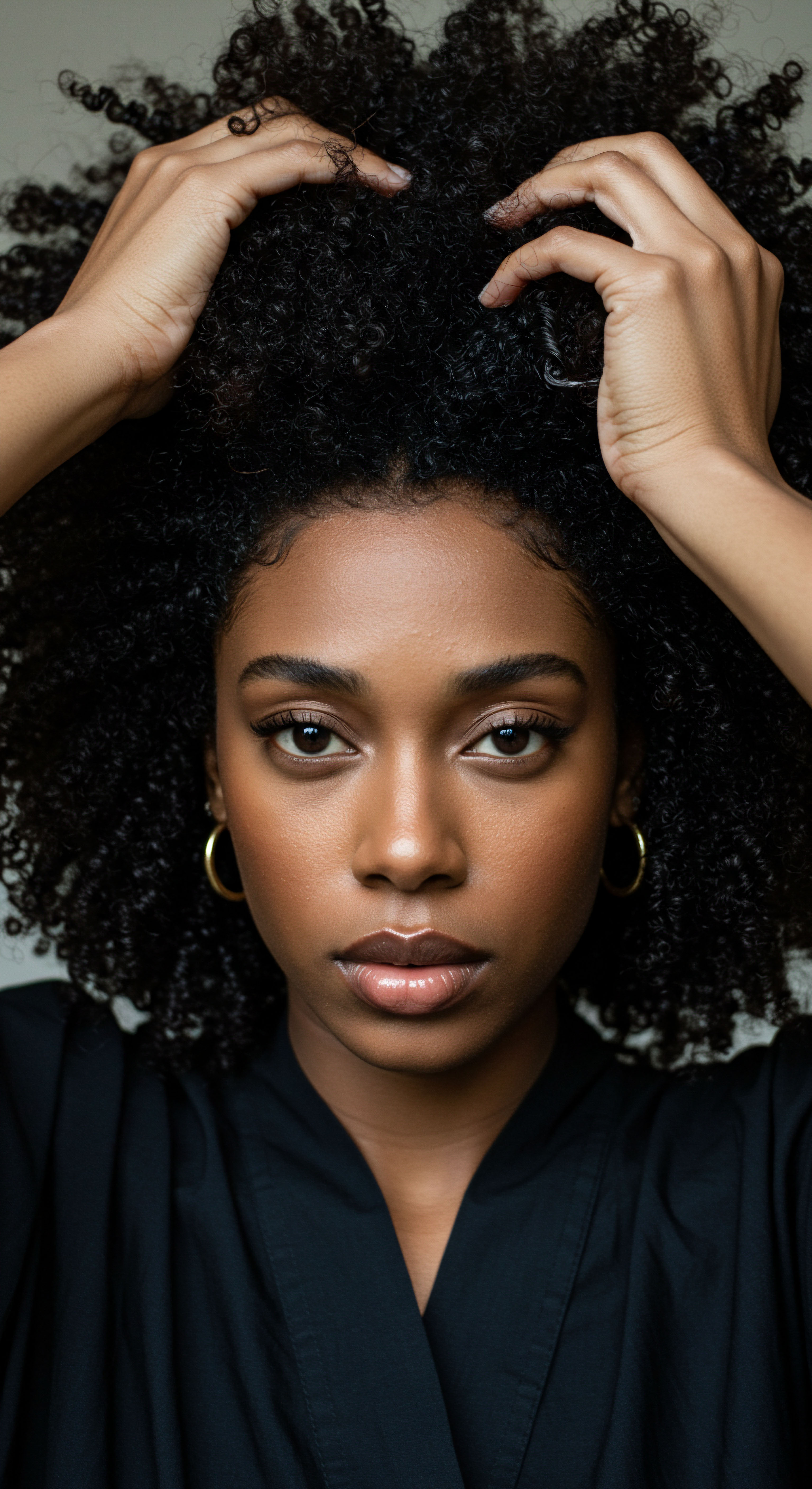
A Historical Echo of Hair Protection
For centuries, various cultures with textured hair have understood the need for nighttime hair protection. Head coverings, scarves, and bonnets, often made from smooth, non-absorbent materials, have served as essential tools in preserving hairstyles and maintaining hair health. This tradition, passed down through generations, speaks to an intuitive understanding of hair’s vulnerability during sleep. The modern silk pillowcase can be seen as a contemporary extension of these ancestral practices, offering a similar protective barrier in a new form.
The cultural significance of hair, particularly for Black and mixed-race individuals, is undeniable. Hair has served as a symbol of identity, resistance, and beauty. The deliberate act of safeguarding coils during sleep, whether with a traditional bonnet or a silk pillowcase, is a continuation of a legacy of care and reverence for hair. It is a quiet act of self-preservation and an affirmation of natural beauty.

The Scientific Undercurrents of Fiber Interaction
The benefits of silk pillowcases are not merely anecdotal; they are grounded in the distinct physical properties of silk fibers compared to those of cotton.
One of the most compelling aspects of silk is its low coefficient of friction. In a controlled laboratory setting, the TRI Princeton research group developed a test to measure the friction between hair and various fabrics. Their findings demonstrated that Luxury Silk exhibited the lowest friction among tested materials, significantly less than cotton. This quantitative data underscores the tangible difference silk makes at a microscopic level, minimizing the abrasive forces that can disrupt the hair cuticle.
Furthermore, silk is a protein fiber, similar in chemical composition to hair itself, both primarily composed of keratin. This biomimicry contributes to silk’s gentle interaction with hair. Cotton, conversely, is a cellulosic fiber. Its porous structure and microscopic surface irregularities create more points of mechanical interaction, leading to increased friction and moisture absorption.
This fundamental difference in fiber composition and structure explains why silk is often described as “hydrophobic” (repelling water) compared to cotton’s “hydrophilic” (absorbing water) nature, a characteristic noted in a study published in the journal PLOS One. This reduced absorbency means silk is less likely to draw out the hair’s natural oils and applied conditioning treatments.
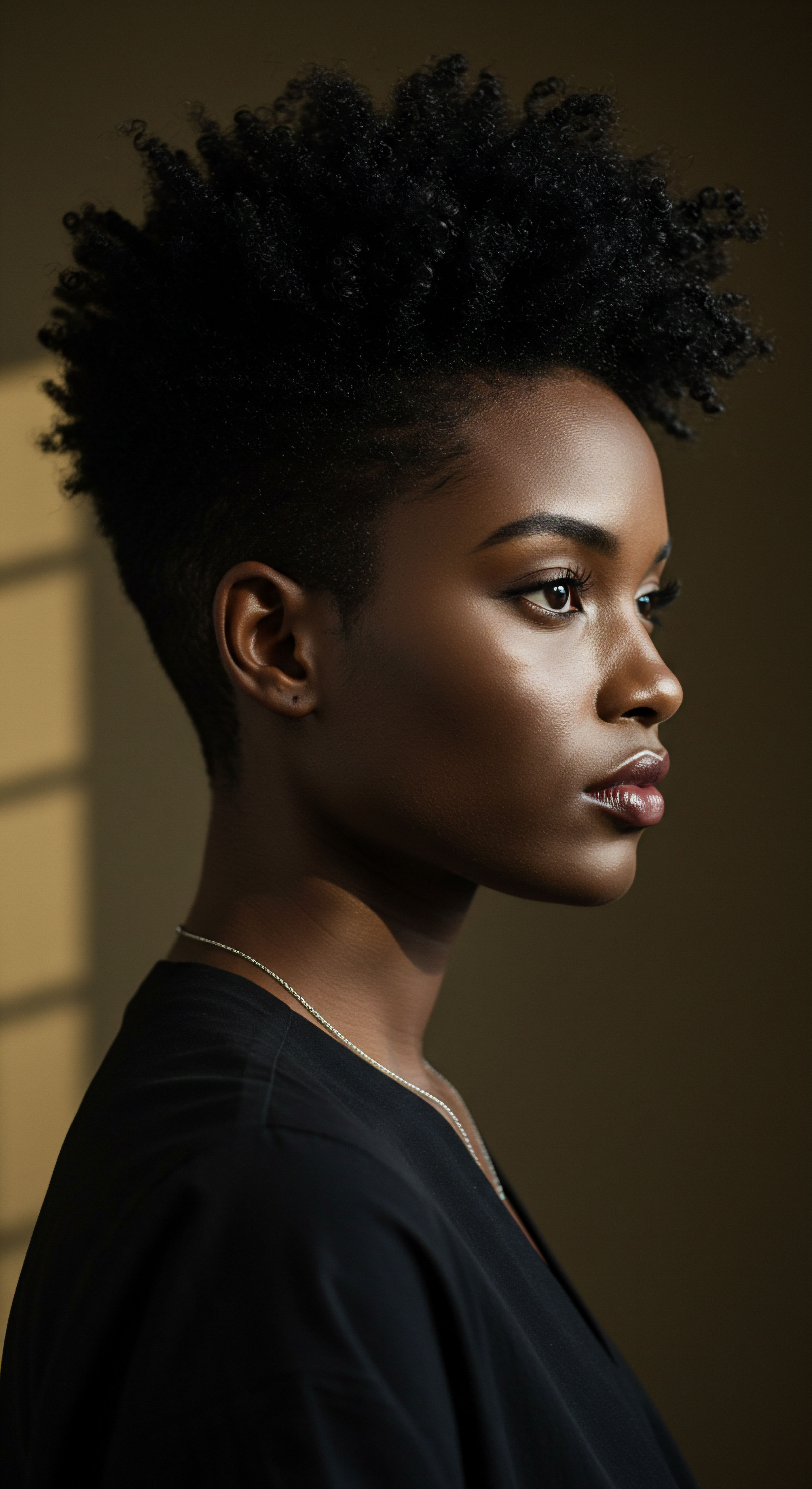
How Does Hair Hydration Affect Coiled Hair Health?
Hydration is the cornerstone of coiled hair health. Due to its unique structure, natural oils from the scalp have a more challenging path traveling down the spiral of a coiled strand compared to a straight one. This often leaves the ends of coiled hair particularly prone to dryness. When hair is dry, its cuticle scales become rougher and more brittle, making them even more susceptible to damage from friction.
The ability of silk to help maintain hair’s moisture balance creates a virtuous cycle. Well-hydrated hair possesses greater elasticity and is more resilient to mechanical stress. This means coils are less likely to snap or develop split ends when they are adequately moisturized, even when subjected to minor friction. This sustained hydration contributes to the overall strength and longevity of the hair fiber, promoting length retention and reducing the need for frequent trims to address breakage.
The choice of a silk pillowcase connects with the deeper narrative of coiled hair care and its cultural significance.
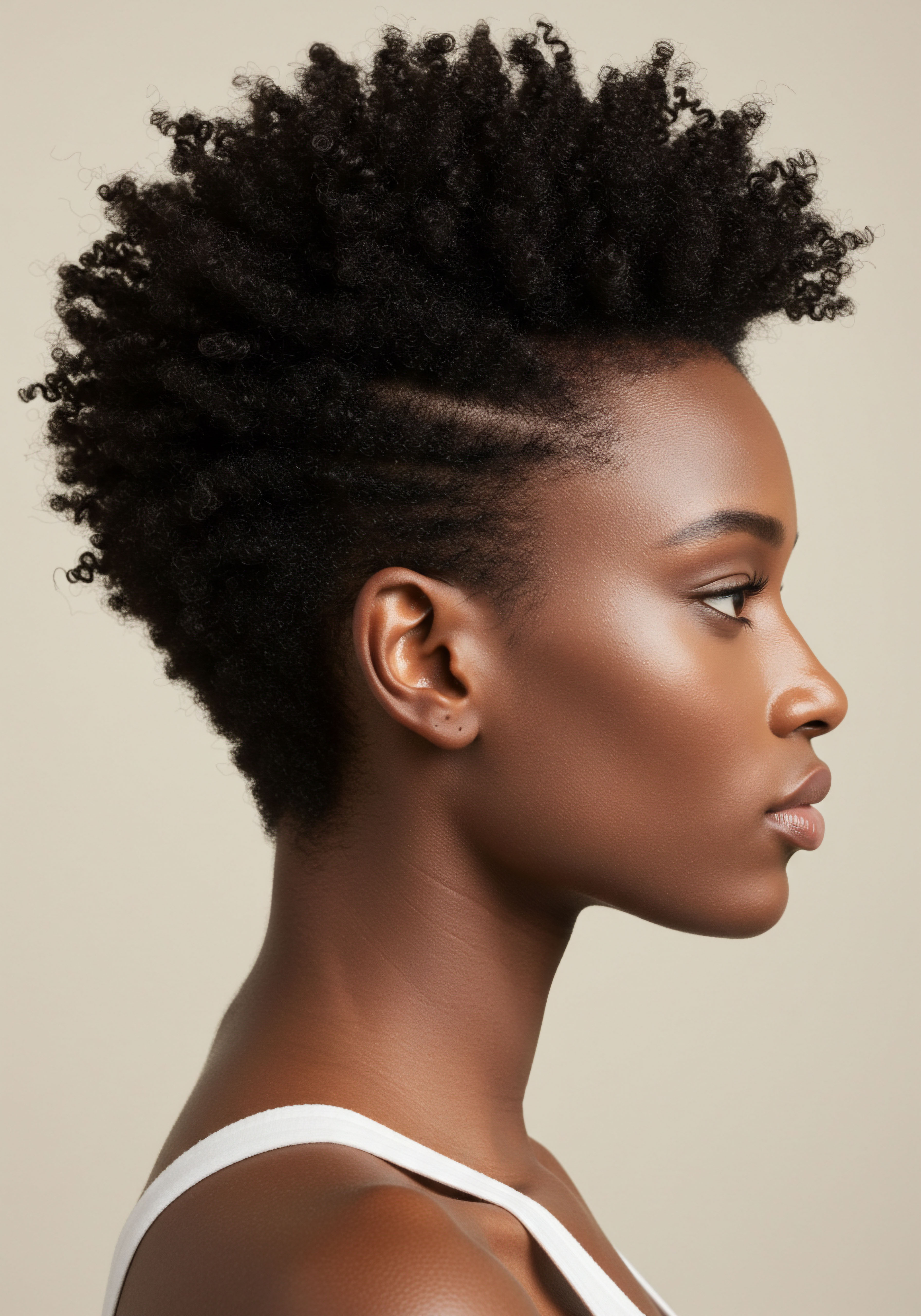
Addressing the Psychological Impact of Hair Health
Beyond the physical attributes, the condition of one’s hair holds a significant psychological dimension. For many, hair is deeply tied to self-esteem and identity. Experiencing chronic breakage, dryness, or persistent frizz can lead to frustration and a diminished sense of well-being.
A recently developed questionnaire, the Hair & Scalp CARE (Condition and Affective Response Evaluations) tool, assesses how hair and scalp issues impact quality of life and psychological well-being. This tool revealed that healthier hair and scalp are connected to better sleep health and less perceived stress. While this study examined a broad range of hair and scalp conditions, the principle applies ❉ when a simple change, such as a silk pillowcase, consistently contributes to healthier, more manageable hair, it can positively influence an individual’s daily experience and self-perception. Waking to coils that feel soft, appear less tangled, and show reduced frizz can start the day with a quiet confidence, reaffirming the value of mindful self-care practices.
The cumulative effect of reduced friction and maintained hydration from a silk pillowcase contributes to a visible improvement in hair quality over time. This sustained benefit supports the integrity of the hair shaft, reducing the need for aggressive detangling or excessive product application to mask damage. It shifts the focus from reactive repair to proactive preservation, aligning with a philosophy of gentle, consistent care that respects the natural inclinations of coiled hair.
- Reduced Breakage ❉ The smooth surface minimizes snagging and tugging, preserving the hair’s structural integrity.
- Moisture Retention ❉ Less absorption by the fabric means hair stays hydrated, reducing dryness and brittleness.
- Minimized Frizz ❉ By preventing cuticle lifting, silk helps maintain a smoother, less frizzy appearance.
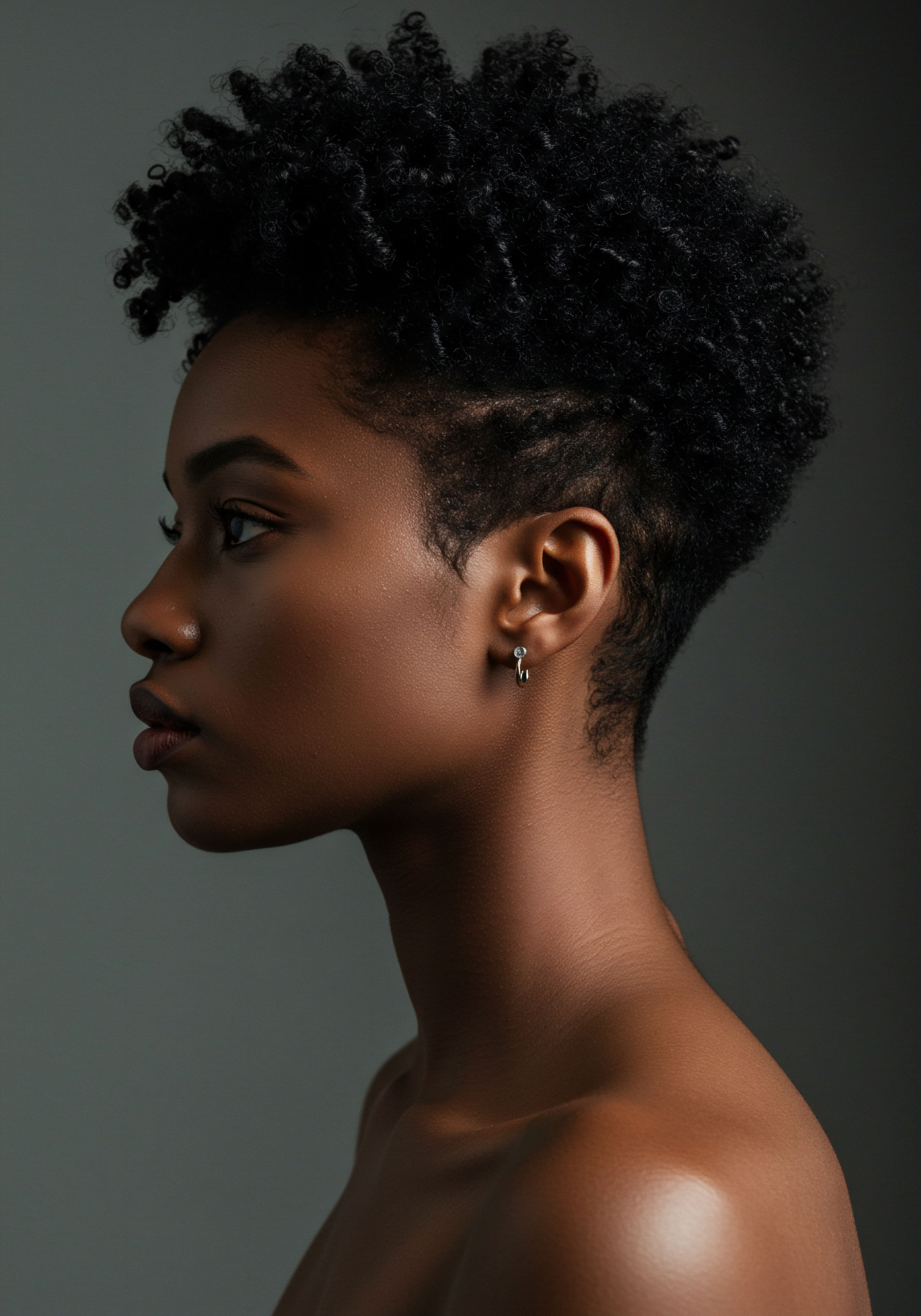
Reflection
The journey through the benefits of silk pillowcases for coiled hair reveals a story far richer than a simple luxury item. It speaks to a quiet understanding of hair’s inherent needs, a gentle nod to cultural practices of protection, and a deep appreciation for the science that underpins these daily rituals. The delicate nature of coils, with their spirited curves and unique thirst for moisture, finds a silent ally in the smooth, cool embrace of silk.
It is a choice that moves beyond fleeting trends, settling into the realm of enduring wisdom, a small act each night that contributes to a larger tapestry of hair health and personal well-being. This deliberate care for our coils is a quiet declaration, affirming their beauty and resilience, one peaceful slumber at a time.

References
- Byrd, Ayana D. and Lori L. Tharps. Hair Story ❉ Untangling the Roots of Black Hair in America. St. Martin’s Press, 2001.
- Chandrashekar, B. S. and Madura C. IADVL Textbook of Trichology. Jaypee Brothers Medical Publishers, 2018.
- Dabiri, Emma. Twisted ❉ The Tangled History of Black Hair Culture. HarperCollins, 2020.
- Bhushan, B. et al. “Friction Dynamics of Straight, Curly, and Wavy Hair.” Journal of Cosmetic Science, 2014.
- Schwartz, E. and Knowles, J. “Frictional Effects in Human Hair.” Journal of the Society of Cosmetic Chemists, 1963.
- Sonawane, Sneha K. Shinde, Prajakta P. and Shelke, Suvarna J. “Shampoos ❉ Hair Care Cosmetics.” Research Journal of Topical and Cosmetic Sciences, vol. 12, no. 2, 2021, pp. 102-106.
- International Journal of Trichology. (Various issues on hair breakage and fabric interaction).
- PLOS One. (Various issues on material properties and their interaction with biological surfaces).
- Journal of Cosmetic Dermatology. (Various issues on hair shaft damage and fabric interaction).